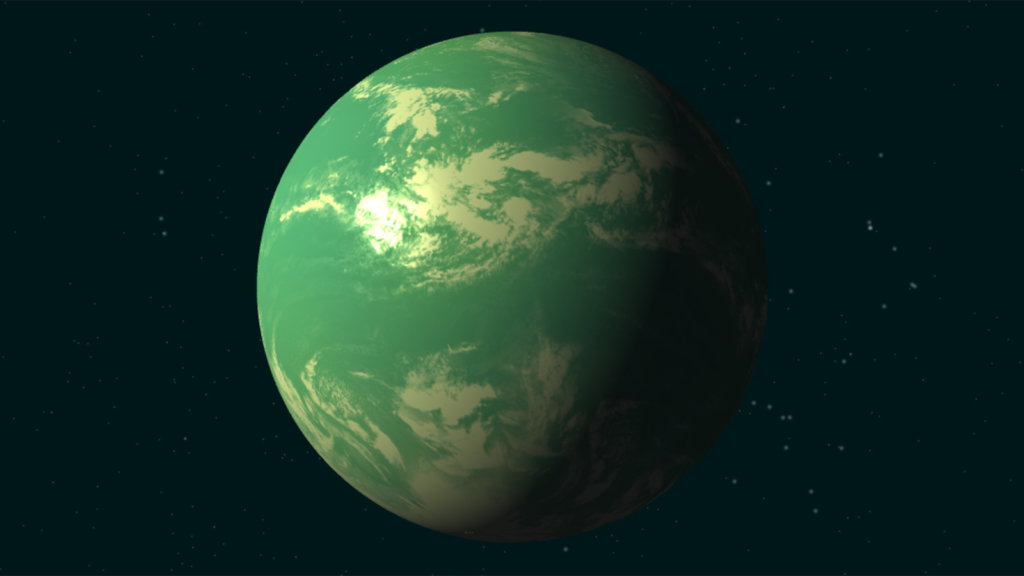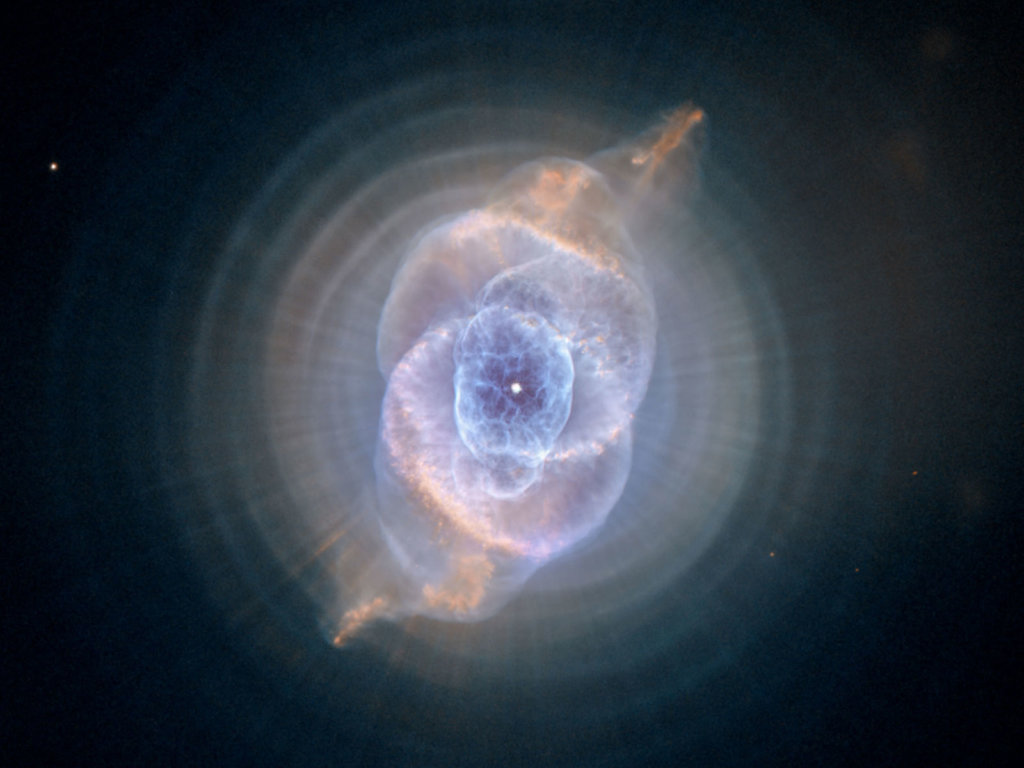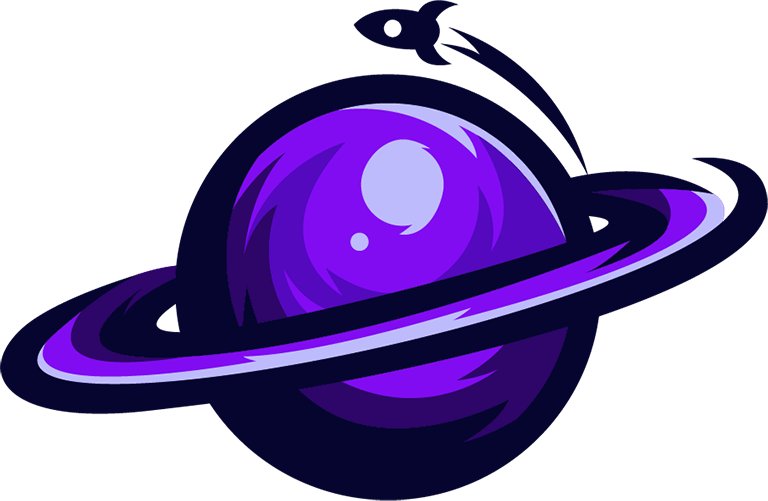Universe Size Comparison
Size matters: the universe and its dimensions
Video of the day September 7th 2019
From the size of planets to stars, to that of black holes, and the very limits of our universe itself! Join me as I reveal you a comparison of the universe.
18. Ceres
So we’re going to do this list a little bit differently than our others. We’re going to start off with an object, and then the next entry on the list is one that is either somewhat bigger, or very much bigger. This will help you get a scale for things.
For example, Ceres. Ceres is a massive object that lies within the asteroid belt that stands between Mars and Jupiter. This belt is known as a “barrier” of sorts to the back half of our solar system, and Ceres is the biggest thing in there. In terms of size, it’s about 950 kilometers long, which is big compared to the various objects in that belt, but not compared to other things in our solar system. Such as…
17. The Moon
For the record, I’m talking about our moon, the one that hangs up in the sky and looks down on us at night (most of the time anyway…). Compared to Ceres, the Moon is a little less than 4 times its size. Coming in at around 3500 kilometers in the length.
The moon is obviously very important to us here on Earth, not only is it a beacon in the sky, it is also a big “controller” of things on Earth. Especially the tides. The moon is perfectly placed to help move the waters without causing major issues. If you recall the movie Bruce Almighty, Bruce moved the moon to impress his girl, and as a result, the Earth suffered because of its gravity.
Still, even with the moon being as big as it is, it’s not the biggest moon out there by a long shot.
16. Mercury
That’s right, we’re not doing another moon just yet (though we will…), but instead, let’s talk about the planets in our solar system. The first planet, and the smallest planet of our planetary line is Mercury. Mercury is special for a lot of reasons, not the least of which is that it is a planet that is the closest to our sun. Which actually makes it one of the most inhabitable planets out there due to its extreme heat thanks to the proximity to the sun.
Coming in at 4900 kilometers long, it’s bigger than the moon and many other things in the solar system, but it’s small compared to all the other planets (except Pluto which may or may not be a planet…I’ll let you decide). Fun fact, Mercury as a planet is actually shrinking. It’s not at a large rate, but it’s enough to make it count over the next few million years.
15. Mars
Ah, Mars, the Red Planet, and for humanity, our next best hope in terms of finding another place to live (I prefer the moon, but that’s just me). It’s “next” to Earth, but unlike certain other planets down the line, the size of it isn’t what you might think. You’d believe that it would be a bigger planet than most but it’s actually on the shorter side with a length of only 6800 kilometers.
One of the reasons that we have hope for Mars in terms of colonization is that the planet has the potential for water, as water has been found on the planet via frozen ice caps. But when we’ll reach there is still unknown.
14. Earth
Hello sun, the Earth says hello! Our home planet is a true mystery of the universe, as currently it’s the only place in the known universe that has life on it in any fashion. As for the planet itself, it’s not only a place of land and water, but also size. The Earth is 13000 kilometers long, just about twice the size of Mars, and trust me when I say that we use that space to the best of our abilities…most of the time.
What’s odd about the Earth’s composition though is that it’s over 70% water. Which means that the land on the planet is very much in the minority. Yet that doesn’t stop us from expanding or building things to help us reach the far corners of our world.
13. Kepler 22B
Going outside our solar system for a sec, let’s look at a planet that is bigger than Earth but is also far away. Found 600 light years from Earth, Kepler-22b is within the Habitable Zone of its star. As well as being twice the size of Earth at 30000 kilometers, the yearly rotation is somewhat similar to our own at about 292 days. So because of this, many consider it a possible planet we can colonize down the line once we advance our space travel methods.

Now, temperature wise, the planet actually isn’t too bad. The best readings state that at its worst it may only get down to 11 degrees Fahrenheit, and at its best, it’ll be around 71 degrees Fahrenheit. Which means the planet doesn’t get immensely hot, but also not too cold.
There are other problems with the planet, including an outer later that may make the planet unsafe for humanity, but for now, it’s a big spot in the universe that has our eyes.
12. Uranus
Yes, go ahead, make all the jokes you want about the name, I’ll let you do it, Uranus is a weird name, and deserves to be made fun of. But, it’s also one of the biggest planets in our solar system at 51000 kilometers in length. And that’s to be respected.
Although, it is also a planet that is on a tilt, as it’s literally a planet that is resting on its side, so thus the rings of the planet are vertical instead of horizontal. Which makes it odd, but also cool to look at.
11. Jupiter
I usually wouldn’t skip Saturn (it’s my favorite planet), but to truly understand the difference between our planets and Jupiter, you need to compare it to a smaller number. Or in this case, planet. Jupiter is a whopping 140,000 kilometers long, which makes it about 3 times the size of Uranus, and over 10 times the size of Earth! Jupiter is also the planet that has the biggest moon in the solar system in Ganymede, and the most moons in the solar system at 79.
So needless to say, Jupiter doesn’t do anything small. Which might be why it’s named after the Roman God who was the “god of gods” in their pantheon. I’m just saying.

10. The Sun
Heading to the biggest thing in our immediate solar system, we now get to show you the sun. Something so massive that even Jupiter feels small in its wake. That’s because the sun is 10 times the size of Jupiter at a whopping 1.4 million kilometers in length.
The sun is arguably the most important thing in our solar system, mainly because of its positioning. If the sun were any closer to Earth, the heat it emits would burn us up. But, if it was any farther than Earth, the heat wouldn’t reach us and we’d be like Mars or Pluto.
Also, the size of the sun allows its gravity to create an orbit that we circle around, thus giving us our year. But even with all that size and mass, the sun isn’t even close to the biggest thing in the universe.
9. Vega
Have you ever heard of the “North Star”? Well you would be referring to Vega, which is the brightest star in the Lyra constellation. But it’s also one of the closest stars to our own sun as its only 25 light years away. That being said, this very special star is much bigger than ours, as it is 3.8 million kilometers in length.
Also, the other big difference between our sun and Vega is that while our sun burns yellow, Vega burns white, which is partially the reason you can see it in the night sky so clearly. And yet, it too is not even close to being one of the biggest things in the universe.
8. Arcturus
Oh, you didn’t believe me? Well allow me to introduce to you Arcturus, one of the Red Giant Stars that you’ll find up in the night sky. It too is one that shines really bright, but this time because of its size. it’s 36 million kilometers in length! Which means it’s basically ten times the size of Vega, and about 36 times the size of our own sun. Granted, this is a Red Giant, which is an entirely different class of star, but still, size matters on this list.
Fun fact, Arcturus was officially discovered at the Chicago World Fair in 1933, and it was through that they determined that the star was 37 light years from Earth.
7. Rigel
Yet another star that continues to outshine its peers (see what I did there?). This particular star known as Rigel can be found in the Orion constellation (known as The Hunter in Greek Mythology), and it is a blue supergiant class star.
This behemoth is 97 million kilometers long. And many actually suspect that one day it will go Supernova. Meaning that it’ll grow very big very fast and destroy just about everything in its path. When that happens…we’ll potentially revise the ranking it’s at in the list.
6. Betelgeuse
Also in the Orion constellation, and also a very bright star in our night sky, Betelgeuse is a red supergiant, and dwarfs Rigel in a rather significant way. Mainly because this star is 1.3 BILLION kilometers long. That’s basically three times the size of Rigel.
For a comparison, if some kind of cosmic event somehow dropped this massive star into our own solar system and replaced our own sun with it, the mass of Betelgeuse would basically destroy everything from the point of the sun all the way until Jupiter more than likely. So you should be glad this isn’t a thing that likely will happen…hopefully.
5. NGC 1277
Ok, let’s stop looking at individual objects for a bit and check out the universe at large. Such as NGC 1277, which is a lenticular galaxy that is 220 million light years away from the Milky Way. Not our solar system, but our entire galaxy that we are a part of.
This entire galaxy, the WHOLE GALAXY is approximately 60 BILLION kilometers in length. So you would need about 60 Betelgeuses’ end to end to fully comprehend the scale and scope of the galaxy.
Because of how old some of its stars are (over 100 million years old) it’s referred to as a “relic” of the old universe.
4. Ton 618
No, I don’t know where they get these names from, but it’s how they like to label things so I don’t judge too much. Ton 618 is a “quasar”, or as Wikipedia states, an ” extremely luminous quasar—technically, a hyperluminous, broad-absorption line, radio-loud quasar.”
The length of said “luminous quasar”? How about 400 billion kilometers in length? What’s more, it’s also the “home” to one of the most massive black holes in history. One that has a mass of about 66 billion times the mass of our own sun. If that doesn’t make you scared…bravo.
3. Cat’s Eye Nebula
From one of the darkest places in the universe (thanks to the black hole…) to one of the most beautiful places we go! Behold, the Cat’s Eye Nebula! A visual marvel of a place that is actually 250 TRILLION kilometers in length. Yeah, that’s a really big place.
Believe it or not, this nebula was actually discovered back in 1786. And has been dissecting at length by scientists and astrologers back home on Earth. Mainly because when viewed through things like the Hubble Space Telescope, we get absolutely stunning images that show all the complexities and beauty that the Nebula has to show.

2. The Milky Way
If you’ve heard of the “Milky Way”, you likely know that it’s the galaxy that contains the Solar System, and thus contains Earth. But what you might forget is just how big that place is as a whole. End to end? The whole galaxy is a 100,000 light years across. Which means that in our lifetimes, and the lifetimes of many generations, we’ll never reach the end of it because it’s so huge.
1. The Universe Itself
As we end this list, it’s important to note one thing about the universe: its size. Which is actually one of the hardest things to do. Mainly because we can’t see the end of the universe for one reason or another. That’s why the phrases “The known universe” and the “observable universe” are thrown around so much in science and space talks. Because humanity truly can’t get a grasp on how big the universe is at the present moment.
It’s not due to a lack of technology though, but rather, a case of the universe being so vast and expansive that it’s hard to quantify. What’s more, the universe is still growing, which means even IF we could measure it, that measurement wouldn’t be accurate for very long. Many feel that the universe growing at a steady rate due to the Big Bang energy that is still prevalent in the universe, or even because of Dark Energy.
But, if you’re looking for a concrete number, the “Observable Universe” is estimated to be about 93 billion lightyears across. Does that make you feel small? You’re not alone.
subscribe to the insane curiosity channel
Insane Curiosity is a channel of astronomy, physics and future technology, which teach mostly about Space, Recent Space Discoveries/News, Future Events, The Solar System, Exoplanets, Mars, Colonization Plans, etc.). We prepare New videos almost every day. Learn With us and Stay Insanely Curious!

Subscribe For the Latest news & Updates
Subscribe For the Latest news & Updates
Get in touch with the Insane Curiosity Channel. Once in while you will receive emails about news, promos, and much more. Stay Tuned!
Insane Curiosity
Science made easy
All rights reserved
Who we are
Insane Curiosity is a channel of astronomy, physics and future technology, which easily explain science. We need science and science need us!
